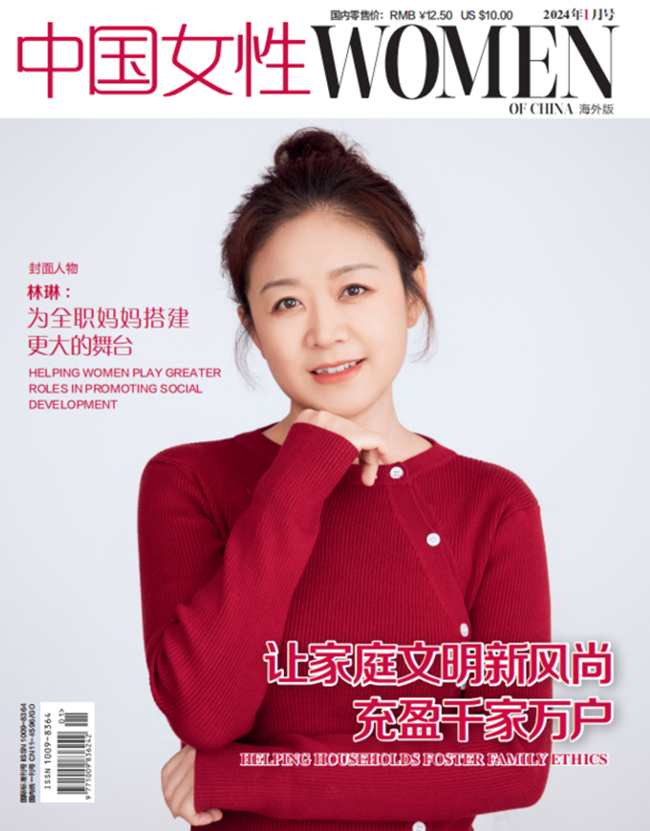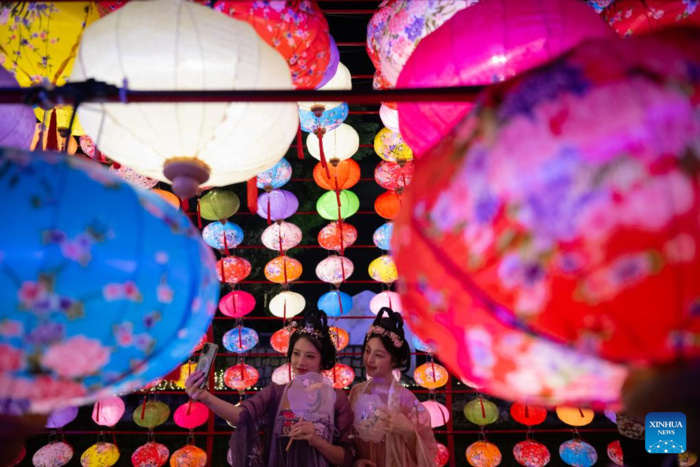Yoga Helps Villagers Live Better, Healthier Lives
 |
| Villagers in Yugouliang practice yoga together. |
Yugouliang, a village in Zhangbei County, in North China's Hebei Province, was once a State-level, impoverished village. It has shaken off poverty, and it is now known as the "Pioneering Village of Yoga in China." Why? The villagers practice yoga together — before and after work every day — to stay healthy.
In Yugouliang, the harvests are poor, as they are affected by climatic conditions in the Bashang area of the Inner Mongolia Plateau. Most of the region's young people have moved away from the village to become migrant workers in big cities. Now, the village's residents are mainly seniors and children.
"The cold weather, poor living conditions and the intensity of physical labor result in poor health and a low quality of life for the older residents in the village," says Lu Wenzhen, first secretary of the village.
While going door-to-door to chat with residents, Lu discovered that every villager adhered to the traditional habit of pantui — sitting cross-legged on the bed. Inspired by his discovery, he came up with the idea of helping villagers build strong bodies by practicing yoga. Lu believed that only with healthy bodies could the villagers strive to rise up out of poverty.
Of the impoverished residents, nearly 60 percent were poor because of illness. "If yoga is used to improve the health of the elderly, family spending on medical treatments will be greatly reduced," Lu said.
He bought 100 yoga mats online, and he distributed the mats among the villagers, for free, to encourage them to start practicing yoga. At one point, more than 60 people were doing yoga together in the village. The initiative caught the attention of farmers, medical workers, teachers, and Party secretaries and directors of surrounding villages, as well as presidents of local women's federations.
Attention from outside the village boosted everyone's morale, and desire to keep going, and the locals had a renewed sense of the importance of fitness. Doing yoga not only strengthened their bodies and helped change their mental outlook, it also lightened their children's burdens.
 |
| The villagers in Yugouliang practice yoga together before and after work. |
Yugouliang's yoga story has been approved by the General Administration of Sport of China, and it has attracted the attention of Chinese and international media, including China Daily, the New York Times, the Globe and Mail and Hindustan Times. As a result of the many media reports, the village quickly rose to fame.
"Residents who used to gather to talk and play mahjong or cards during their free time are now doing yoga," Lu says. Yoga lovers, from all over the country, flock to the village to experience this unique style of rural yoga.
The local anti-poverty work group and the village committee worked together to formulate the long-term development plan to build health-care facilities, and to improve infrastructure, including the roads, the environment, and street lighting, which gave the village a new look.
Lu also volunteered to help the villagers register the trademark, "Yugouliang," and used the brand to market newly introduced quinoa planted in the village. Yugouliang quinoa has become popular since the villagers expanded their online marketing channels.
 |
| Villagers in Yugouliang practice yoga on yoga mats. |
Wu Qilian, 77, is a shy, rural woman in Yugouliang. When the villagers started practicing yoga, Wu stood by and made gestures.
She surprised the other villagers when she finally joined in, and especially after she became a strong yoga performer. Given her outstanding performance, Wu, who once remained indoors, traveled around the country to participate in interviews and TV shows. She even performed on the stage of the 2019 Spring Festival Gala broadcast by Hunan Satellite TV.
Wu's grandson, Xu Biao, a young, migrant worker, was surprised to find his grandmother performing yoga when he returned home for Spring Festival in 2019. He shot short videos and posted them on Kuaishou, a video-sharing platform, where the first video had more than 30,000 views, and the second had approximately 175,000 views.
He saw an opportunity in the netizens' interest in the videos, and Xu began making short videos for his grandparents on a regular basis. His Kuaishou account has since attracted nearly 20,000 followers, and received over 3 million hits, to become one of the most popular accounts on the video-sharing service.
Xu also explored the live-streaming market. With the help of a local work group on poverty alleviation, he attended a training course in Shijiazhuang, the capital of Hebei, to learn live-streaming and video-shooting skills. Led by the village, he choreographed a video course for basic rural yoga, which earned him more than 5,000 yuan (US $746) in the first month.
Jin Xiuying, president of the women's federation of Yugouliang, is another beneficiary of new media, such as Kuaishou, in the countryside. As a video blogger with more than 150,000 followers, she is now skilled at shooting short videos, and she sells farm products, such as quinoa, via live-streaming platforms. She also shoots choreographed videos of rural yoga classes, and she earns nearly 6,000 yuan (US $896) in monthly sales revenues.
The "yoga village" continues to embrace unprecedented development opportunities, many of which result from both the increasingly convenient transportation and the progress of regional — Beijing, Tianjin and Hebei —integration. Those who have been to Yugouliang will be impressed with the local people's heartfelt happiness, satisfaction and confidence.
 |
| The villagers in Yugouliang warm up before practicing yoga. |
Photos supplied by Zhao Zhannan
(Women of China English Monthly October 2020 issue)
Please understand that womenofchina.cn,a non-profit, information-communication website, cannot reach every writer before using articles and images. For copyright issues, please contact us by emailing: website@womenofchina.cn. The articles published and opinions expressed on this website represent the opinions of writers and are not necessarily shared by womenofchina.cn.






.jpg)

 WeChat
WeChat Weibo
Weibo 京公网安备 11010102004314号
京公网安备 11010102004314号